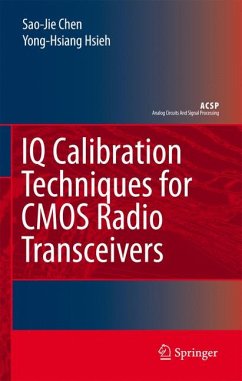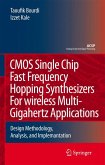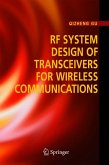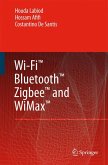The cost of achieving this higher spectral efficiency using higher order QAM is that the transmitter and receiver requires a higher signal to noise ratio (SNR) with the same level of error rate performance (relative to a baseline BPSK, QPSK and other systems). One of the dominant vectors on SNR degradation is I/Q image rejection (I/Q gains and phases imbalance).
There are a lot of factors that degrade the matching of gains and phases between I/Q signals: the instinct layout mismatch, the random mismatch of the devices, the different temperatures over the I/Q signal paths. IQ Calibration Techniques For CMOS Radio Transceivers describes a fully-analog compensation technique without baseband circuitry to control the calibration process. This book will use an 802.11g transceiver design as an example to give a detailed description on the I/Q gains and phases imbalance auto-calibration mechanism.
Dieser Download kann aus rechtlichen Gründen nur mit Rechnungsadresse in A, B, BG, CY, CZ, D, DK, EW, E, FIN, F, GR, HR, H, IRL, I, LT, L, LR, M, NL, PL, P, R, S, SLO, SK ausgeliefert werden.









